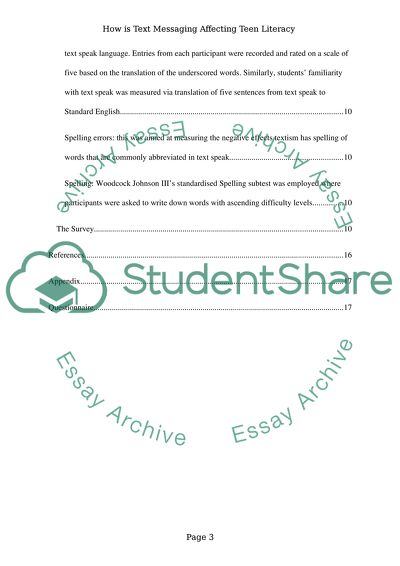Cite this document
(“How is Text Messaging Affecting Teen Literacy Research Paper”, n.d.)
Retrieved de https://studentshare.org/education/1463961-research-report-how-is-text-messaging-affecting
Retrieved de https://studentshare.org/education/1463961-research-report-how-is-text-messaging-affecting
(How Is Text Messaging Affecting Teen Literacy Research Paper)
https://studentshare.org/education/1463961-research-report-how-is-text-messaging-affecting.
https://studentshare.org/education/1463961-research-report-how-is-text-messaging-affecting.
“How Is Text Messaging Affecting Teen Literacy Research Paper”, n.d. https://studentshare.org/education/1463961-research-report-how-is-text-messaging-affecting.


